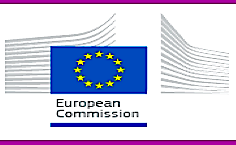Fluorinated gases are a family of powerful greenhouse gases with a
warming effect on the atmosphere up
to 23,000 times greater than that of CO2.
The EU agreement should also
make it easier to come
to a global agreement on
phasing down HFCs
under the Montreal Protocol.
Original → HERE
European Commission Welcomes
Parliament Vote on Fluorinated Gases
12/03/2014
The European Commission welcomes the European Parliament’s endorsement today of an agreement reached between the EU institutions on the Commission’s proposal to significantly reduce emissions of fluorinated gases. Climate Action Commissioner Connie Hedegaard said: ”Today marks the beginning of the end for fluorinated gases in Europe. Not only is this good for the climate, but also for the European industries that will invest in more innovative, cleaner alternatives. And I really hope that other big emitters who have announced action to tackle these dangerous greenhouse gases will now follow Europe’s example and also pass domestic legislation. This will send a clear signal about their commitment to tackle climate change.”Background:
-
Fluorinated gases are a family of powerful greenhouse gases with a warming effect on the atmosphere up to 23,000 times greater than that of CO2. They include HFCs (hydrofluorocarbons) which are commonly used in refrigeration and air conditioning.
-
The text approved by the Parliament today maintains the level of ambition proposed by the Commission in 2012, which will result in a two-thirds reduction in F-gas emissions by 2030. The new Regulation introduces a phase-down measure that successively reduces the amounts of HFCs that can be sold in the EU and bans the use of F-gases in some new equipment, such as fridges and air conditioners.
-
The revised Regulation will help further reduce the EU’s greenhouse gas emissions while driving technological innovation and creating great opportunities for European businesses.
-
The decision confirms the European Union’s position as a global leader in taking strong measures on F-gases. The EU hopes it will inspire other countries to take similar action in order to help reduce global greenhouse gas emissions and meet the internationally agreed goal of keeping global warming below 2°C compared to the temperature in pre-industrial times.
The EU agreement should also make it easier to come to a global agreement on phasing down HFCs under the Montreal Protocol. Its measures will have ripple effects on other markets and affect companies operating globally. It will also demonstrate that effective action on HFCs is ‘low hanging fruit’: climate-friendly alternatives can readily replace fluorinated gases in many sectors at moderate cost to society.
Read more:
A) Fluorinated greenhouse gases
B) Fluorinated greenhouse gases
Text of the future Regulation as adopted by the European Parliament
-.-.-.-.-.-.-.-.-.-.-.-.-.-.-.-.-.-.-.-.-.-.-.-




